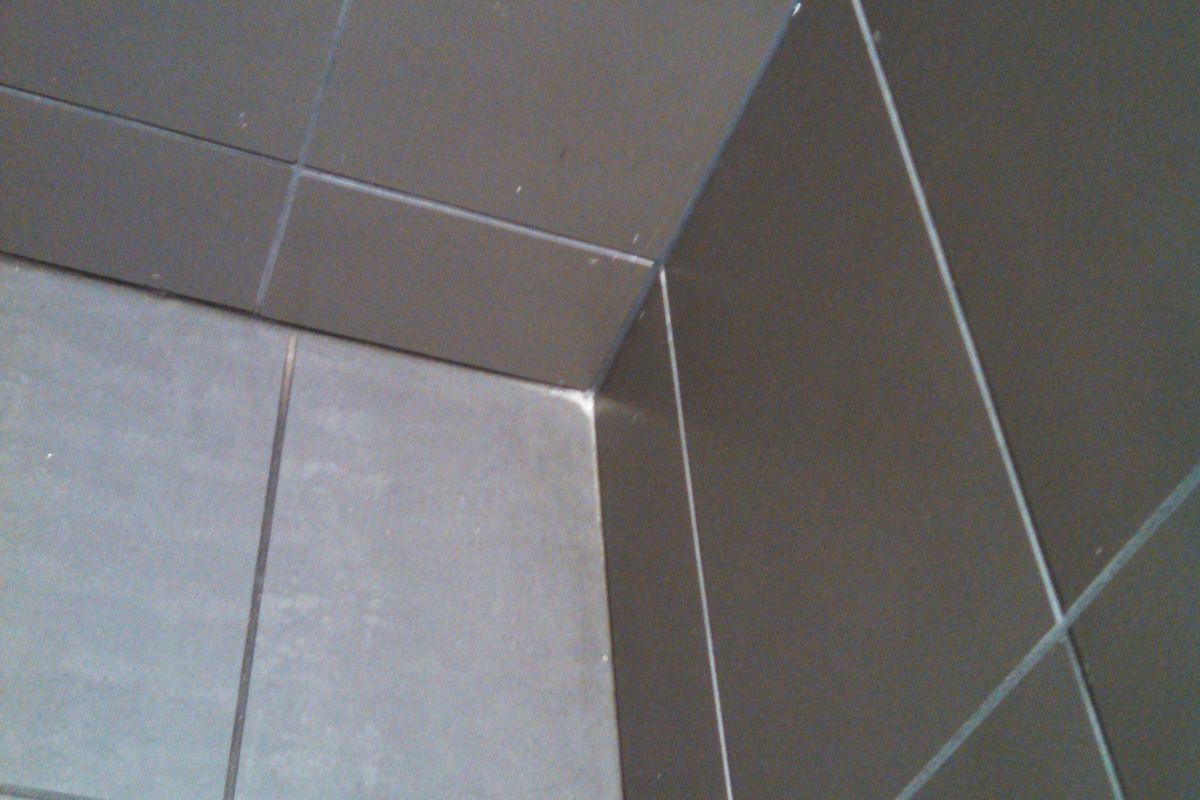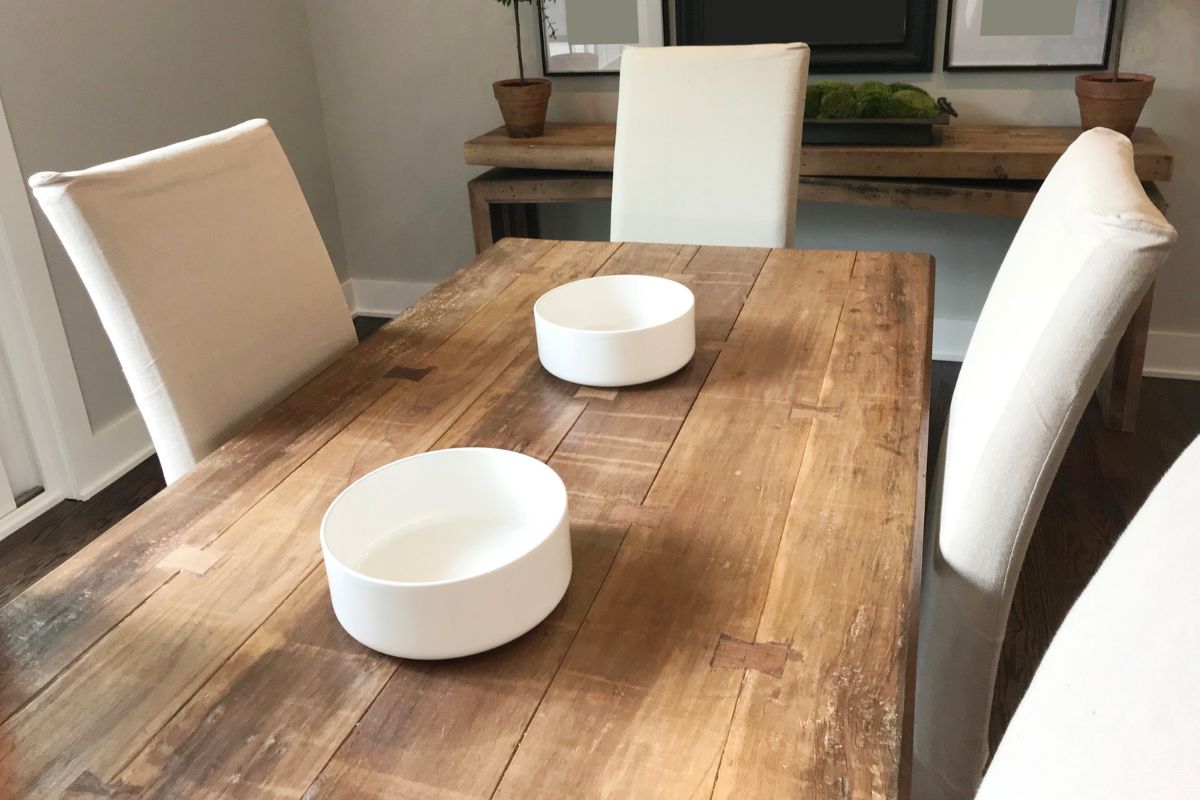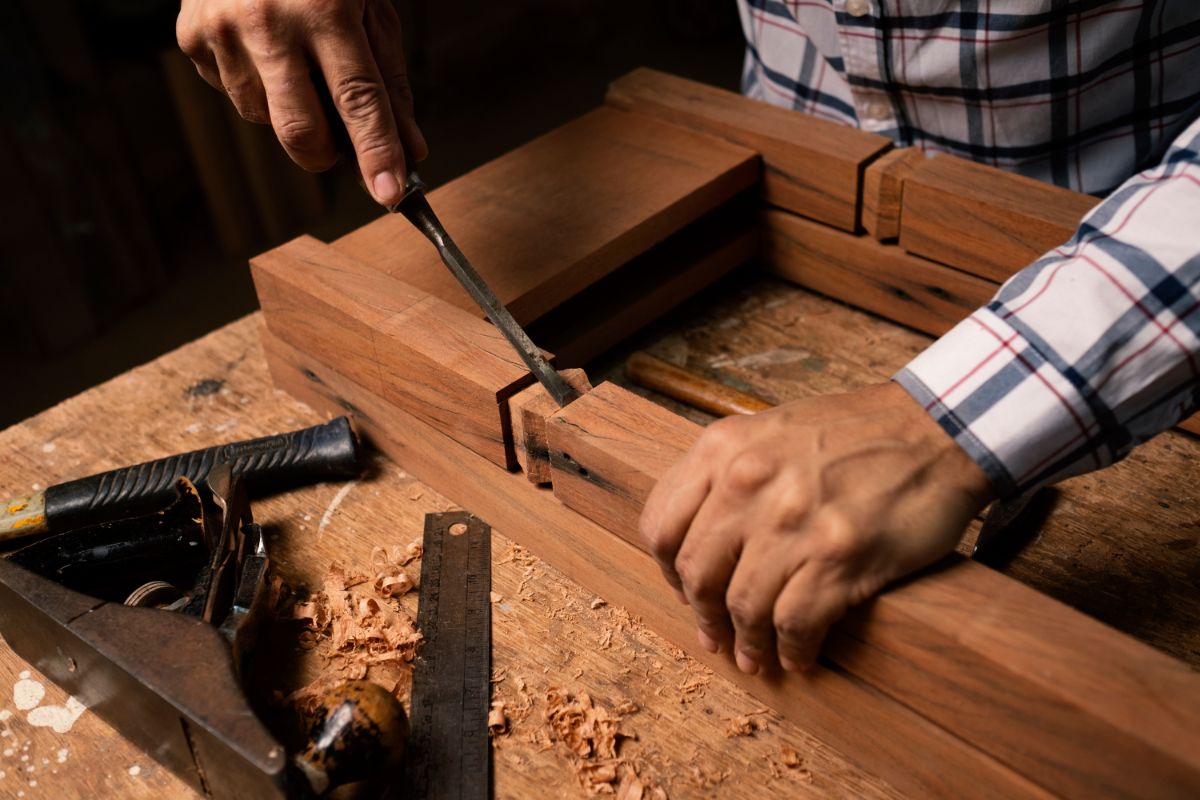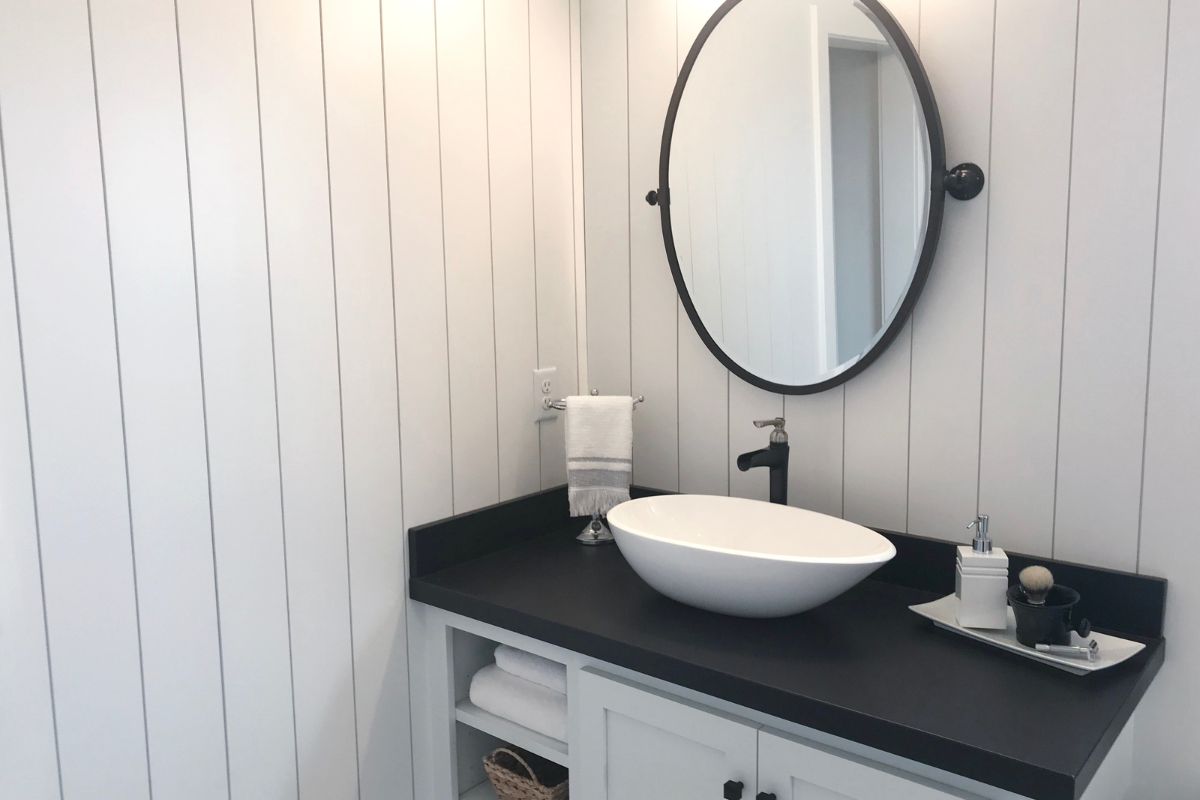If you’re doing a bit of DIY, then you might find yourself having to put down some tiles on the floor or on a wall.
When you do this, you will often find that the tiles don’t quite fit together to cover the space, and you’ll need to cut some of them into the correct shape.

But how can you cut a tile? They have a reputation for being fairly sturdy things, and so surely cutting them must be different.
Well, you will usually be dealing with either ceramic or porcelain tiles. What’s the difference?
Well, both use clay as part of their ingredients, but porcelain used a much denser clay. This means that porcelain tiles are a lot harder than ceramic ones.
In fact, porcelain tiles are the most commonly used for walling and flooring jobs, so you’re likely dealing with them.
However, if you go to cut one, then you must be careful: if they get chipped, their colors are going to be hard to replace correctly.
Therefore, you need to cut them correctly. That’s where we come in!
In our handy guide below, we’re going to explain 6 easy ways that you can cut a porcelain tile, each using a different tool.
Read on! Remember, if you don’t have much DIY experience using tools, please get a professional to help you. These tools can be dangerous.
6 Easy Ways To Cut A Porcelain Tile
When it comes to cutting a porcelain tile correctly, there are a few tools that you can use. These tools are:
- A tile cutter
- A tile nipper
- A wet saw
- A wet wheel (a.k.a a diamond blade)
- An angle grinder
- A drill bit
Each of these tools requires different handling and a different method in order to cut the porcelain tile.
Some tools are more expensive than others. For example, the tile cutter and wet saw are both very costly.
Keeping Yourself Safe
Before we get to the different methods for each of these tools, explaining the way that you can use them to get the perfect cut on your porcelain tile, we need to outline some safety advice.
Since you will be dealing with saw blades and sharp edges, it’s essential that you take the proper safety precautions.
This is especially true if you’re using the drill bit or the wet saw, which are both very dangerous tools.
If you’re not a professional, you should get a professional or experienced person to handle these tools for your own safety.
Otherwise, follow these tips.
- Always wear the correct protective gear and clothing. You should have goggles on, as well as protective gloves.
- Additionally, you’ll need some ear protection to keep your ears safe from threats and loud noise. Your shoes also need to be correct for the job, firm and not getting in the way. If your hair is long, make sure it’s tight back, well out of the way.
- To keep the saws in healthy, safe condition you should make sure that you regularly lubricate them. This should stop them from failing or cutting poorly.
- When using the machine, use some scrap wood to help keep your fingers away from the blades. This is essential.
- You must keep focused at all times when operating the tools too. Don’t ever let your mind wander, because it could lead to fatal accidents. Additionally, make sure that other people aren’t wandering into the room as you work.
Above all, if you are not experienced with the machinery and tools, you need to get a professional’s help.
The Methods
Cutting A Porcelain Tile With A Tile Cutter
We’re going to begin with the title cutter, which is one of the more expensive tools.
This is because it’s a tool that gets to work very quickly, meaning that you get fast results.
On top of that, it allows you to make all kinds of changes to the cuts, making sure that you get the best one for your tile’s specific size and shape.
In fact, using a manual tile cutter is a bit like using a paper cutter. However, be sure to keep very safe when using one, since it has sharp edges.
The Cutting Process
First off, you need to adjust the tile cutter’s guide so that it matches the way that you want to cut your porcelain tile.
Once you’ve got it done, lock it. Then slide the tile into place, in line with your markings, and then put the cutter onto its edge.
Now begin to push down on the cutter, sliding it across the marks on the porcelain tile. Remember, be very careful!
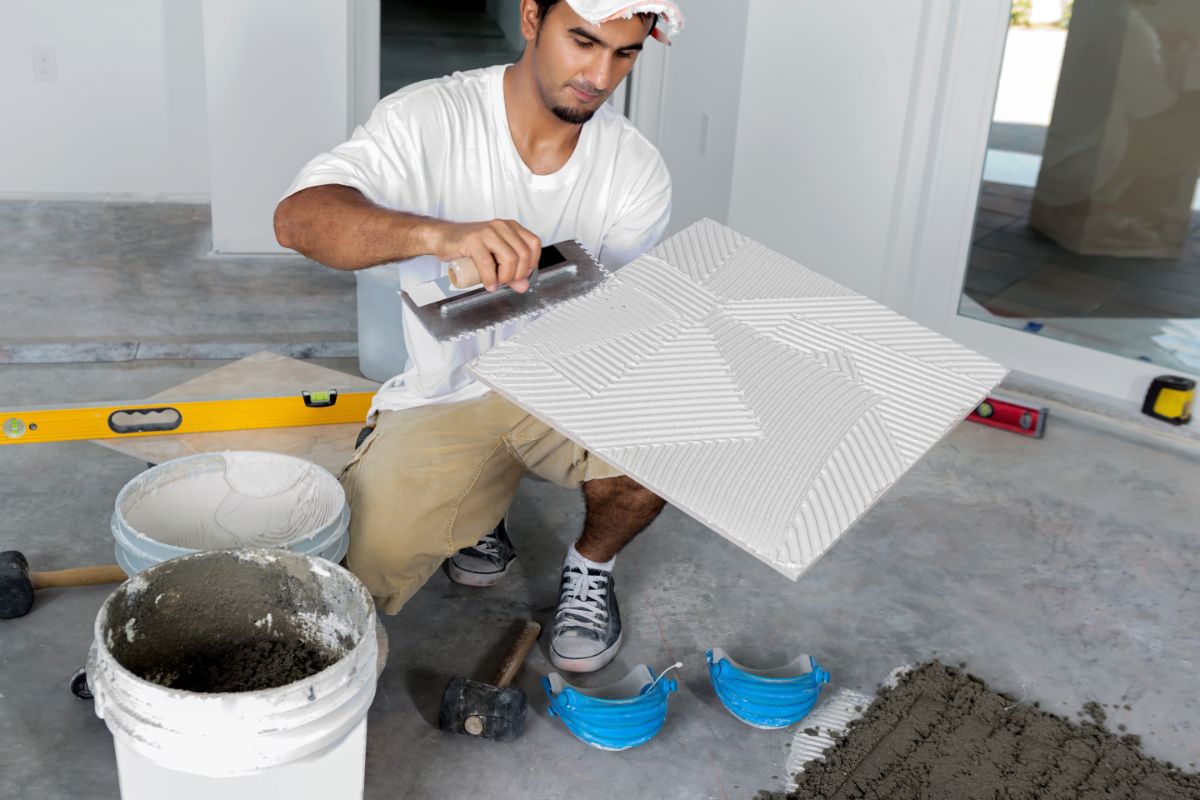
Once the cutter comes to the end, press down, which will break the tile into its two smooth sections.
With your two pieces, smooth down their edges with some sandstone. This will make your tile a lot neater and safer.
Cutting A Porcelain Tile With A Tile Nipper
On the other hand, a tile nipper is a very common tool and pretty inexpensive.
Despite their low price, they can accomplish a lot. They work well for making regular cuts, as well as more complex ones, such as cutting circular sections or arcs in the tiles.
On top of that, they’re very simple to use, which has made them very popular, with the best brands being Kobalt and Qep.
The Cutting Process
When you use one, you need to first mark a line on the edge of your tile at the point where you want to make the cut. Use a wax pencil to do so.
Next, get your tile nipper. Hold its cutting part on the edge center of the line you’ve drawn on, then apply some pressure.
This should break the piece of tile off. You’ll want to do this repeatedly, breaking off small pieces of tile each time until you’ve got your full cut.
Be careful as you do each small nip, working very slowly so as not to break off the wrong part.
Once you’ve nipped off all the bits you wanted, and the tile has been cut, you should get some brick.
Rub the brick over the new edges, smoothening them out and making it safer and neater. Be careful, those fresh edges will be very sharp.
If you overwork the tile nipper, it might stop working. If it begins to not nip off the small pieces, perhaps it is worth going for one of the other safe, easy cutters.
Cutting A Porcelain Tile With A Wet Saw
A wet saw is definitely one of the most expensive tools on this list. This is why it isn’t going to be a good choice for small, occasional jobs.
People who invest a sizable amount of money in a wet saw do so because they are going to be using it regularly, for lots of different jobs.
As for efficiency, this is also one of the very best ways to cut a porcelain tile. However, when you consider the cost and the fact that it’s a very dangerous machine to use if untrained, then it can often not be worth using.
However, if you have the proper training, then it’s going to give your porcelain tile a very clean cut.
Avoiding Chipping
With that being said, you will want to notch the porcelain tile before you begin cutting. If you don’t, then the saw could chip it.
In order to make the notch, first put the saw blade on the tile and draw a mark on the part that you want to notch.
Next, position the tile so that the mark is facing the saw blade, but not touching it.
Very carefully, turn the saw on. While it’s on, safely push the porcelain tiles towards the cutting blade, until it has cut a little notch in it on your marked point.
For a small tile, you’ll want the notch to be about an inch, while it should be 2 inches for a bigger tile.
Turn the saw off. Then turn your tile over, making sure that the blade has stopped spinning, and get ready to properly cut your tile.
Another way to avoid chipping is by putting a suitable tape on the edges of where you want to cut, masking it up and protecting it.
The Cutting Process
Now that you’re ready to cut, mark a line on your tile where you want to cut. Use a wax pencil for this.
You’ll also want to ensure that the cutting blade has been recently sharpened, otherwise it could mess up and pose a risk. A sharp blade will give you clean cuts.
Have you wondered why it’s called a wet saw? Well, it’s because it has a reservoir that you have to fill up with water before cutting.
The water will be sprayed onto the blade during cutting, in order to cool it down and keep it lubricated. Therefore, the water is essential.
Fill up the reservoir with water right up until the saw blade is touching the water, then stop.
Next, place the tile into position. This will depend on which direction your wet saw cuts from, be it from below or from above.
You’ll want to make sure that the tile is at level with the blade, too, for a neat cut.
Now adjust your wet saw so that it will cut an ⅛ of an inch deep at most, because any more than that could damage the tile.
When you’re ready, with the edges and the cutting line marked out, use the saw. Then, once it’s made the cut, stop the saw and wait for the blade to stop.
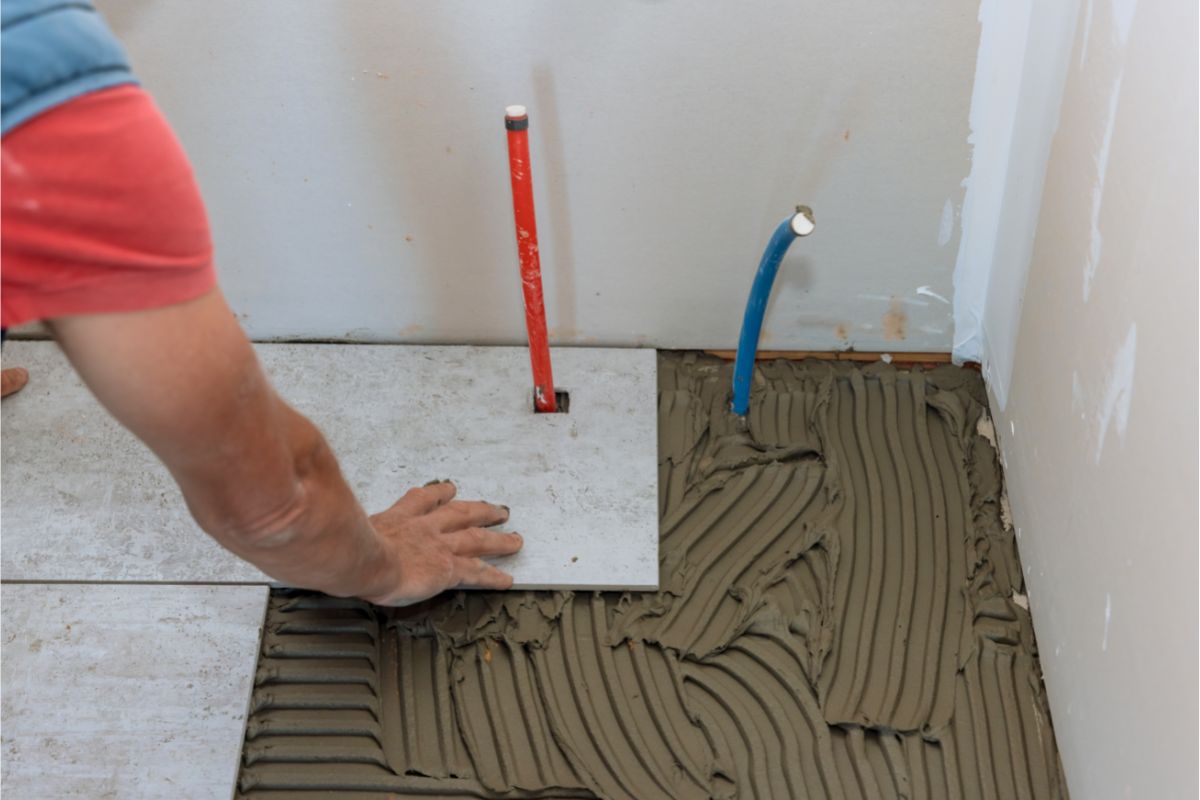
Cutting A Porcelain Tile With A Wet Wheel
A wet wheel is a great tool to use if a person is going to cut very firm, coarse objects.
Fascinatingly, it does this by having diamonds fixed onto the blade’s edge, which is why the saw is also known as a “diamond blade”.
Though a porcelain tile may not be the hardest object, it still has its strength, and therefore you might use a wet wheel to cut it. If you do, you can do it like this:
The Cutting Process
Some wet wheels will cut from below, with the blade fixed facing upwards, while others will cut from above.
Either way, they both use a system that keeps the blade wet, just like with the previous tool.
This is because the blade can get hot as it works, and it also needs to be kept lubricated.
As usual, you can cut the tile by carefully and slowly pushing it towards the blade whole it’s on.
However, you will want some side support for the tile, which you can make out of wood.
You can draw a line on your tile to help guide the correct bit onto the blade, and cut the correct line.
Some wet wheels will come with cutting guides that you can use, which you align the tile with, and they help make specific angles of cut much easier.
Be slow as you push the tile through the saw, because excess pressure could cause the tile to chip.
Cutting A Porcelain Tile With An Angle Grinder
An angle grinder will allow you to do all sorts of different cuts to the tile, such as straight cuts, circle cuts, and square cuts.
It’s also incredibly efficient at cutting curved angles into titles, which is perfect for when you’re trying to fit the toilet onto a curved area, like a toilet pipe.
For this reason, along with its relatively cheap price tag, make it one of the best tools for cutting porcelain tiles.
The Cutting Process
In order to cut the tile with an angle grinder, first mark on the tile the shape of the cut you want to make.
To make the marker, use some electrician’s tape, rather than a pencil.
Make sure that you mark the shape down on both sides of the tile, so you know exactly where you’re cutting.
Now take your angle grinder and turn it on. Being very careful to keep yourself from harm, and while wearing the correct protective gear, begin to cut along your marked line.
Do it very slowly, and without too much pressure to avoid chipping. Imagine that you’re making lots of little cuts along the way, and this slow approach will stop the saw from jamming.
Once you’ve cut your piece, use an abrasive wheel to smooth the fresh edges.
Cutting A Porcelain Tile With A Drill Bit
Using a drill bit to cut a porcelain tile is one of the most dangerous methods, so you must not try this if you don’t have the skill or experience. It may not appear difficult, but it can be quite a task.
Now, when we talk about cutting the tile with a drill bit, it isn’t cutting in the traditional sense.
You’re not cutting a line, simply drilling a hole into it, through which you might want to put some sort of tube or thin pipe.
The Cutting Process
First, get a drill bit that is the correct size for the hole you want to drill.
Next mark where you want the hole to be, and use thick tape around it to stop it chipping.
Then properly fix the tile down, so that it will not move as you drill. After that, drill very slowly into the mark, as deep as you want the hole to be.
Final Thoughts
If you’re looking to cut a porcelain tile (or drill a hole in one), then the different tools and methods we’ve shown in this guide should help.
Remember, always be very careful when using these tools. If you’re inexperienced, get a professional to do the work for you.
- The Woodworkers Guide to Brad Nailers: Everything You Need to Know - September 25, 2023
- How To DIY An Aztec Garden Dining Table [The Easy Way] - October 18, 2022
- Farrow & Ball Pigeon: Is It Right For Your Home? - October 17, 2022



